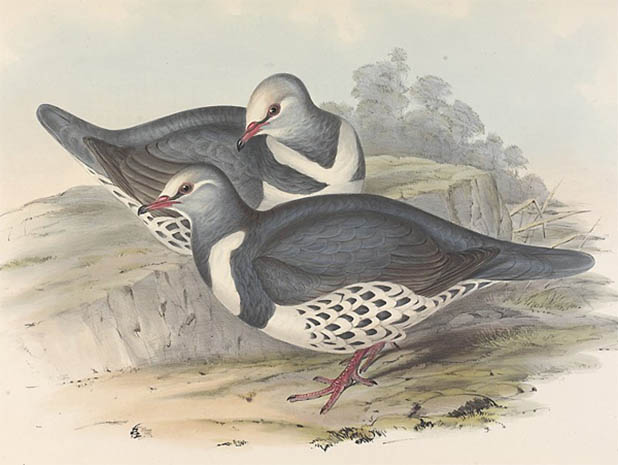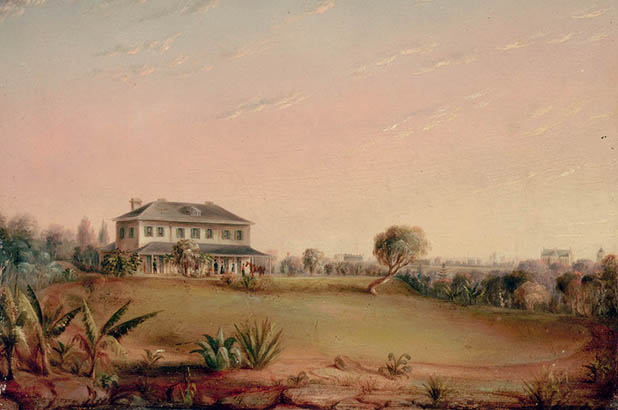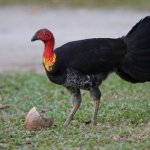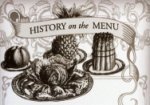June 29, 1846
I dined this day with my respected chief, Lieutenant-General Sir Maurice O’Connell, at his beautiful villa, Tarmons… there were brisk coal fires burning in both dining and drawing-room, and the general appliances of the household, the dress of the guests and the servants, were as entirely English as they could have been in London…
An antipodean dinner
Imagine Godfrey’s delight, enjoying the privileges of rank and social connection in what was still a somewhat rough-and-ready colonial outpost in the 1840s. Godfrey Mundy, who was a cousin of Governor Sir Charles FitzRoy, arrived in Sydney in 1846 as deputy adjutant general of the military forces in Australia and toured the colony with avid interest. On his return to London in 1852 he published Our Antipodes: or, Residence and Rambles in the Australasian Colonies, with A Glimpse of the Gold Fields from journals he kept during his sojourn.
Mundy’s observations and anecdotes provide a valuable and lively account of life in Sydney and rural districts of New South Wales and Victoria. His host at this elegant dinner was Maurice O’Connell, who was married to William Bligh’s daughter, Mary (Mary is famous for defending Government House during the 1808 rebellion against her father – standing up to the Redcoats at the gates, armed only with an umbrella!).
Similar in elegance to Elizabeth Bay House, Tarmons was one of the elite mansions that dotted the Woolloomooloo hill, designed by John Verge; one can imagine the ambiance and grace of such a fine Georgian dining room, but this particular meal held some surprises!
The family likeness between an Australian and an Old Country dinner-party became, however, less striking when I found myself sipping doubtfully, but soon swallowing with relish, a plate of wallabi-tail soup, followed by a slice of boiled schnapper, with oyster sauce. A haunch of kangaroo venison helped to convince me that I was not in Belgravia. A delicate wing of the wonga wonga pigeon with bread sauce, and a dessert of plantains and loquots, guavas and mandarine oranges, pomegranates and cherimoyas, landed my imagination at length fairly at the Antipodes.
Godfrey Mundy June 29, 1846
Written with great character and enthusiasm, Our Antipodes provides a wonderful insight into life in the colonies in the mid-nineteenth century, and happily for the gastronomer, includes dozens of references to food and dining.
Wonga Pigeon: a native delicacy

Leucosarcia Picata (Wonga-wonga Pigeon), from Birds of Australia, John Gould, 1840-1848. National Library of Australia
This particular entry is significant in that contrary to the Englishness of the event, the menu it describes with such relish, is dominated by native ingredients. Too often we are told that European colonists rejected indigenous food sources in favour of British fare, except in the face of hunger and despair. Yet this elegant meal in a gentleman’s residence in fact celebrates Sydney’s culinary requisites, albeit cooked in the English style; note the ‘ wonga wonga pigeon’ (now more commonly called Wonga Pigeon) was served with bread sauce, a traditional accompaniment to roast fowl or chicken.
Wonga Pigeon was popular with colonists for its large breast portion which was particularly plump and white; it was still appearing on menus in the 1870s. As a native species, the Wonga Pigeon is now protected.
Old-fashioned bread sauce
Ingredients
- 1 small onion
- 1 bay leaf
- 4 whole cloves
- 1 blade of mace (optional)
- 6 whole peppercorns
- strip of lemon peel (pith removed)
- pinch cayenne pepper (optional)
- 500ml (2 cups) milk
- 90g (1 1/2 cups) breadcrumbs (made from 2-day-old bread, crusts removed)
- 60ml (1/4 cup) pouring cream
- pinch of ground white pepper
- good pinch of ground nutmeg
Note
A precursor to white bechamel-style sauces, bread sauce was a traditional accompaniment to roast chicken. It is also lovely with hot corned beef or poached pink-fleshed fish. For these options, add 1 tablespoon of horseradish cream to give the sauce extra pep.
Makes 600 ml
Directions
| Peel the onion, leaving it whole, but trim and discard the roots from the base. Wipe or rinse the onion clean. Attach the bay leaf to the onion using the cloves as 'nails'. Put the onion in a saucepan with the mace, if using, peppercorns, lemon peel and cayenne pepper, if using. Add the milk and warm over low heat, stirring occasionally. Simmer gently for 20 minutes, partially covered with a lid, then remove from the heat and allow the flavours to infuse for around 30 minutes. Strain the sauce through a sieve, discarding the solids and any skin that has formed. | |
| Return the milk to the pan and reheat over low heat. Add the breadcrumbs and stir for 5 minutes or until the breadcrumbs are saturated and a thick sauce can be formed by smoothing the crumbs with the back of a spoon. Add the cream, white pepper, nutmeg and a pinch of salt. Cook for another 5 minutes, stirring so that it does not stick to the base of the pan. Serve immediately, or closely cover the surface of the sauce with plastic wrap. Store in the fridge for up to 3 days and reheat gently when required. | |
| Cook's tips: For a lighter sauce, make as directed but substitute 1/2 cup milk with chicken stock. If the sauce is too thick for your liking, add a little chicken stock towards the final stage of cooking. | |
Source
Our Antipodes, by Godfrey Charles Mundy, Abbreviated and with an Introduction by D.W.A. Baker (Canberra: Pandanus Books, Research School of Pacific and Asian Studies, Australian National University, 2006.
More about Tarmons
In the 1870s Tarmons was used for St Vincent’s Hospital – see links to discover its fate

 Print recipe
Print recipe

